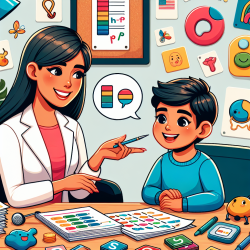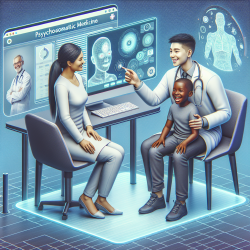In the realm of speech-language pathology, understanding the personal impact of neurogenic communication disorders is pivotal for effective therapy. The book "Neurogenic Communication Disorders: Life Stories and the Narrative Self" by Barbara B. Shadden, Fran Hagstrom, and Patricia R. Koski offers an in-depth exploration of how these disorders affect individuals' narrative selves. This blog post aims to help practitioners enhance their skills by implementing the research outcomes presented in the book or by encouraging them to delve further into the subject.
Understanding the Narrative Self
The concept of the narrative self, as discussed in the book, is a framework that helps clinicians explore the impact of neurogenic communication disorders on an individual's identity and life story. The narrative self is the internalized and evolving story of one's life, which is disrupted by disorders such as amyotrophic lateral sclerosis, Parkinson's disease, stroke-related aphasia, and dementia.
Key Takeaways for Practitioners
To integrate the insights from this book into clinical practice, practitioners can focus on several key areas:
- Client-Centered Approach: Emphasize the importance of understanding the client's personal story and how their communication disorder has affected their sense of self.
- Holistic Assessment: Incorporate narrative-based assessments to capture the client's life story, values, and goals.
- Therapeutic Techniques: Use narrative therapy techniques to help clients reconstruct their narrative self, fostering a sense of continuity and coherence in their life story.
- Interdisciplinary Collaboration: Work with professionals from psychology, sociology, and other fields to gain a comprehensive understanding of the client's narrative self.
Practical Applications
Implementing the narrative self framework in clinical practice can lead to more personalized and effective therapy. Here are some practical applications:
- Life Story Interviews: Conduct interviews with clients to gather detailed information about their life experiences, focusing on how their communication disorder has impacted their narrative self.
- Reflective Journaling: Encourage clients to keep a journal where they reflect on their experiences and how they perceive their identity and life story.
- Storytelling Activities: Use storytelling activities in therapy sessions to help clients articulate their experiences and rebuild their narrative self.
- Support Groups: Facilitate support groups where clients can share their stories and learn from others with similar experiences.
Encouraging Further Research
While the book provides a solid foundation for understanding the narrative self in the context of neurogenic communication disorders, there is still much to explore. Practitioners are encouraged to engage in further research to deepen their understanding and refine their therapeutic approaches.
Areas for Further Research
Consider exploring the following areas:
- Longitudinal Studies: Conduct longitudinal studies to track changes in clients' narrative selves over time and identify factors that contribute to successful narrative reconstruction.
- Intervention Efficacy: Evaluate the efficacy of different narrative-based interventions in improving clients' sense of self and overall well-being.
- Cross-Disciplinary Insights: Collaborate with researchers from other fields to gain new perspectives and develop innovative therapeutic techniques.
- Technology Integration: Investigate how technology, such as online therapy platforms like TinyEYE, can be used to support narrative-based interventions.
Conclusion
By integrating the concept of the narrative self into clinical practice, speech-language pathologists can provide more personalized and effective therapy for individuals with neurogenic communication disorders. Practitioners are encouraged to implement the insights from "Neurogenic Communication Disorders: Life Stories and the Narrative Self" and to engage in further research to continue advancing the field.To read the original research paper, please follow this link:
Neurogenic Communication Disorders: Life Stories and the Narrative Self.










